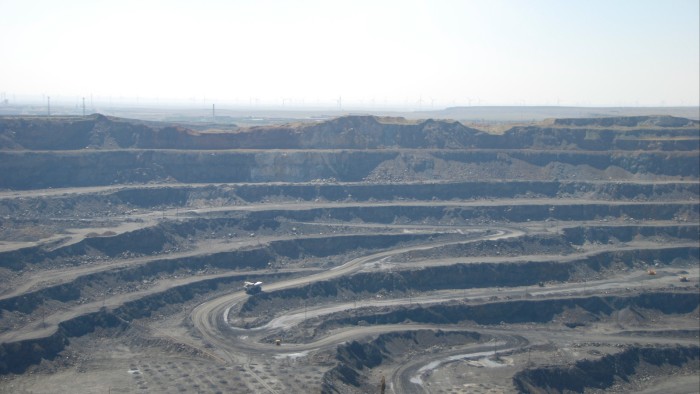Unlock the Editor’s Digest for free
Roula Khalaf, Editor of the FT, selects her favourite stories in this weekly newsletter.
It is not often that habitual complacency makes you an astute judge of world events, particularly those involving geopolitical conflict. But for decades a shrug has been the best response to the perennial panics over shortages of critical raw materials for the green transition. The causes have ranged from China threatening to cut off exports of rare earths and other minerals to the soaring global prices of metals such as nickel and lithium. In practice, the routine operation of market forces, plus some support from diplomatic and legal efforts, ensured they had only passing impact.
The latest iteration is the most threatening yet, with China imposing licensing requirements on the export of seven rare earth elements on April 4, apparently to retaliate against President Donald Trump’s tariffs. The burden of proof about serious shortages remains on the pessimists, but if conflict over global mineral trade does arrive the US remains hugely unprepared.
Scarce minerals have, as it were, cried wolf many times. Policymakers worry about bottlenecks — the EU is currently on its fifth list of critical raw materials — but it’s very hard to point at any manufacturing industry in a major economy where a shortage has caused serious damage.
The issue became prominent after China’s threat in 2010 to cut off sales of rare earth elements to Japan, though it’s not clear Beijing actually stopped exports. Spot prices of the more widely traded “light” rare earths duly surged. But the controls were undercut by smuggling out of China — mining-rich provinces were notably lax at enforcing restrictions — plus increased supply from places such as Australia and a World Trade Organization ruling against China in 2014. China relearnt the old commodity market wisdom that the best cure for high prices is high prices, and that manipulating supply for political leverage risks losing control of market dominance.
Similarly, during panics over lithium and nickel supplies in the early 2020s, producers such as Chile and Indonesia were courted (or taken to the WTO) by big users like China, the US and the EU. In the event, surges in supply meant prices for the two metals collapsed. China’s threat in 2023 and 2024 to cut off the US and Europe from supplies of the minerals gallium and germanium, used in semiconductors and electronics, were undercut by exports from Vietnam and the possibility of new supply from the end users themselves.
The rare earth restrictions announced on April 4 are much more serious. Rather than raw materials in bulk they involve finished articles, particularly magnets, made by only a few Chinese companies and traceable through the supply chain. Unlike previous export controls, they are executed via end-user licensing requirements for materials with dual military and civilian use, which restricts foreign companies selling them on. If China really does maintain and enforce a ban on sales to the US, it could affect the manufacture of F-35 fighter jets as well as electric vehicles.
The materials involved are so-called medium and heavy rare earths, which are harder to extract and process. Industry experts say that increasing supply from elsewhere is likely to take years, as is retooling EV or other supply chains to use other technologies. Prices of heavy rare earths such as dysprosium shot higher after the controls were announced.
Whether China really wants to target the US is anyone’s guess. As the FT has reported, the licensing requirements threaten production networks worldwide, suggesting the Chinese authorities have over-reached. Some of the first licences have been granted to suppliers of the German company Volkswagen, which makes cars in China and which opposed the EU imposing anti-subsidy duties on Chinese exports of EVs to Europe.
“It will probably be easier to get a licence if you’re a country, perhaps in Europe, with closer political links with China or companies owned by China,” David Merriman, research director at Project Blue, a critical materials consultancy, told me. “In the US, there is a pretty elevated risk of supply-chain disruption.”
China’s stop-gap deal with Trump on May 12 to roll back some of the tariffs may have reduced the immediate incentive to cut the US off. But America remains vulnerable. It has made only modest attempts to increase domestic rare earth production and processing. It has minimal stockpiles of critical minerals. Trump has risked a geoeconomic war with China without any discernible attempt to prepare or even assess the dangers.
Precedent suggests the current episode of export restrictions will pass without catastrophe as China loosens supply. But it’s also clear that Beijing has developed sharper and more precise weapons if it does choose to fight a conflict over critical raw materials. The case for complacency remains arguable, but it becomes ever weaker as time goes on.
alan.beattie@ft.com
https://www.ft.com/content/24187c18-9cfe-4b8c-8863-6f3bf09e2cd4


